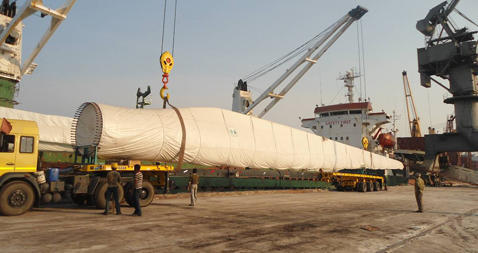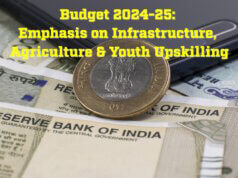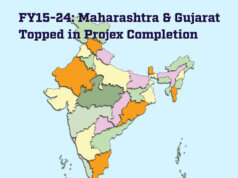
 —Rajesh Mehta, Executive Director, Liladhar Pasoo
—Rajesh Mehta, Executive Director, Liladhar Pasoo
What are the various services that you offer in the field of project logistics?
Liladhar Pasoo has a dedicated and experienced team for project logistics, wherein we offer end-to-end logistic services where the scope covers from pick-up till delivery of goods at final place of destination. This is possible due to our vibrant presence global and locally.
We initiate the project activities by first understanding the details of goods, packing list and lifting design, we find the center of gravity of goods and fix the lifting lugs this will generate loading /unloading plan of the goods which need to be followed while handled at port or site.
Once this is done we look out for the appropriate vessel matching the lay can according to cargo readiness a fixture note is signed to freeze on the responsibilities of shipper and consignee. Goods are loaded on the vessel and proper lashing/choking is ensured, shipment documents are properly checked to ensure smooth customs clearance on arrival.
Before arrival of vessel we conduct a road survey from port till the delivery site. In order to identify a right route to allow safe movement of goods, we monitor the whereabouts of goods and keep the customer informed, on a daily basis.
What are the typical challenges that you face during transportation of heavy and over-dimensional project cargo?
The biggest challenge is poor road connectivity and conditions. Nearly three-fourths of India’s infrastructure is yet to develop. There is no synchronization between different departments responsible for development of right infrastructure, resulting in wide gaps in the final output and eventually, the country is compromising on the objective of creating safe and well connected infrastructure.
To explain further roads made are narrow with low-lying electrical lines making it difficult for the heavy and ODC movements. This further aggravates when the goods has to reach hilly regions or pass through city roads.
It is important to mention that bridges are not maintained or reconstructed to strengthen for it to take a heavy load cargo.
You feel that infrastructure bottlenecks tend to delay movement of project cargo. Are you satisfied at the pace at which India is upgrading its transport infrastructure?
India seriously misses out on the vision of creating connectivity designs, technology adoption to construct long lasting infrastructure and identification of experience and qualified companies to ensure the desired output. Excellent connectivity between industry, market place and ports can bring down the cost of logistics. The pace of infrastructure construction is not perceived. It needs visibility and it is not just about being on newspaper headlines.
An average turnaround time to conceptualize and implement a single project is more the one year. Ease of doing business is only discussed and what we need is simpler departmental procedures and adherence to strict safety and quality norms for infrastructure construction with penalties for project timeline overruns which can bring out performance from the contracted construction companies. It is important to be price-focused but only quality should be prioritized.
Please discuss the role of information technology (IT) in adding efficiency to the logistics value chain, especially project logistics.
IT can play a crucial role to bring efficiency in safe handling and reducing time taken in departmental procedures. A commendable initiative was taken by NHAI by going online for issue of road permit that has helped reduce time and cost. Similar portal is required for route survey. It should guide on handling norms and suggest safe way to reach the desired destinations.
What comes to your mind as the most challenging project cargo assignment in recent times?
We had a project where we had to pickup cargo from a factory in Gurgaon, truck it to Nhava Sheva, get customs clearance, and export it from Nhava Sheva. The cargo with dimensions (L:27ft x W: 10.2ft x H:17ft) weighing 34 tonnes had to cover a distance of 1,400 km, from Ghaziabad (Uttar Pradesh) to Nhava Sheva Port (Maharashtra).
We had to arrange pick up of cargo from a small village near Ghaziabad. The challenge was not only the poor road conditions but the low-lying high voltage electrical wires that supply electricity to the villages. Due to the height of the cargo, it was risky to move the cargo under the wires. We obtained permission form the local authorities to temporarily disconnect the overhead wires to allow safe passage of the cargo. On our way, we also had to disconnect wires of three villages before we could hit the national highway.
To ensure that the cargo did not damage the electric infrastructure we also had to lift 5-6 low lying wires with a long wooden stick to allow safe movement of the cargo. All the operations were executed by qualified electrical technicians under the supervision of local authorities. The over-height cargo reached Nhava Sheva within six days. The operations required experience and meticulous planning.
Discuss the impact of the under-construction Dedicated Freight Corridor on the Indian logistics industry.
DFC is all about connectivity that helps bring down cost and time. This will allow manufacturers to sell their goods across India and also enter the global market by increasing India’s presence in global trade which is currently less then 1 per cent in terms of volume.
DFC should be innovative towards water bridges. That would be greener and more economical. It will also reduce the dependency on roads for transportation which is currently at 60 per cent.
What is your view on implementation of GST and its implication on the logistics industry?
The GST is expected to be implemented by fiscal year 2016-17 and is aimed at reducing multiple taxes. Interstate sales transaction will become tax neutral, the whole country become one single common market without any state borders. Logistics companies will therefore see a major change in transportation of goods and location of warehouses. In the past, warehouses were set up for avoiding state taxes, even at the cost of operational efficiencies.
Due to trade barriers such as entry taxes, local body taxes, octroi and other hurdles, trucks are sitting idle 30 to 40 per cent during their delivery schedule. Now this would effectively mean companies would need fewer but higher-capacity vehicles for carrying out the same business. Also, warehouses will be located as per market forces of demand and supply. Smaller warehouses of 15,ooo to 20,000 sqft will merge into larger size warehouses of say 2 lakh-plus sqft area .
Tell us about your key growth plans in the context of project logistics.
Liladhar Pasoo commands a sizeable presence in 18 industry verticals with specialization in chemicals, oil and gas, engineering and EPC, energy, and FMCG, to name a few. We intend to open overseas office to capitalize on our brand repute, the customers we service, the volumes we handle and our vision, to service these industries across their supply chain globally.











